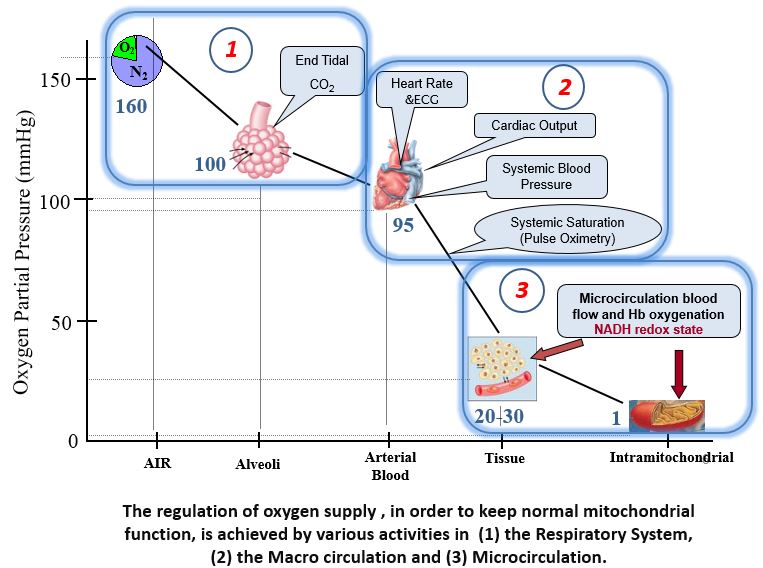Clinical Background
In emergency metabolic states – the body protects the vital organs (heart, brain..) by diverting blood flow from less-vital organs (skin, muscles, intestine, urethra etc.)
Potential disturbances in tissue include:
- Blood flow: insufficient amount of blood.
- Blood oxygenation: insufficient amount of oxygen in RBC
- Cellular (mitochondrial) function: impaired oxygen utilization and production of energy
Intensive care: key principles include early detection of evolving conditions and optimal adjustment of therapeutic means, yet global monitoring parameters such as BP, CVP, CO, etc. are not sensitive enough to changes at the tissue level. Additional capabilities are needed.
MDXViewer First Application: Operating rooms and ICUs
Critically ill patients in variety of disease entities such as sepsis, develop during the course of their illnesses episodes of shock or a relative reduction in oxygen delivery to various organs. The assessment of degree of perfusion and adequacy of oxygen delivery to tissues and organs is critical for the management of the patient and in the evaluation of the patients’ status, prognosis and response to treatment
MDXViewer allows a non-invasive assessment in non-vital tissue of the metabolic activity and the energy state of the mitochondria, as well as information regarding the microcirculation. This real-time information enables the physician to evaluate whether the patient is in shock, whether the shock state is worsening and what is the effectiveness of the response to therapy with fluids or drugs. MDXViewer will provide useful, sensitive and specific information on the metabolic status of the patient, adding significant information to current procedures and improving the state-of-the-art in patient monitoring in critical care.
The MDXViewer Tissue Metabolic Score monitoring system consists of a disposable urethral wall probe integrated into a Foley urinary catheter and a free-standing base unit containing light sources, signal detectors, processing units and a display.
Oxygen Gradient from Air to Mitochondria &
Monitoring Parameters / Modalities

